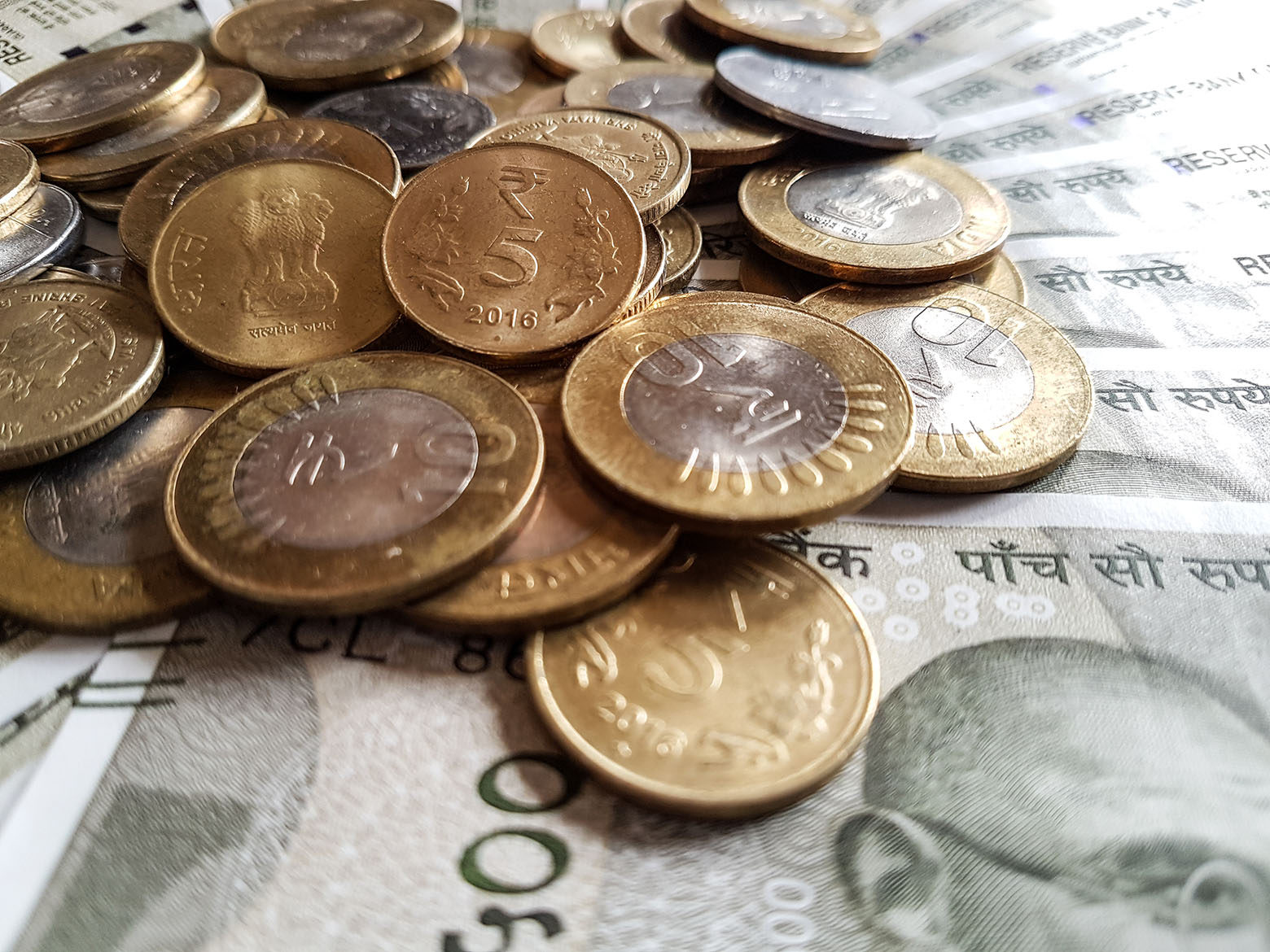
When we discuss the value of a currency, it is mostly in terms of USD. Thus, RBI (reserve bank of India) regularly announces the dollar rate in Indian rupees. The number of NRIs and international businesses is increasing, and it is imperative to be proactive in financial decision making. This ability requires you to predict at least the short term changes in the value of INR. Here are the top factors that would affect the value of INR in terms of USD.
Table of Contents
Check the Fed rates
Currency traders always keep an eye on the Fed minutes, and it is because they can use the Fed rates’ trajectory to understand the value of other currencies. If the Fed rates are higher, the US bonds will have better yields. It triggers investors to invest more in the US bonds, which will increase the value of USD. Consequently, the dollar rate in Indian rupees will sink, weakening INR.

Does it mean that if the USA is in financial crises, INR will increase? Yes, but it is not a safer boat to bet. For example, in 2008, when there was a financial crisis in the USA, the government bought a majority of the bonds, increasing the Feb bond portfolio by 450%. Although the reason why INR saw a small rise in 2017 was because of the USA crisis, it is not a permanent growth.
Dollar index alters the dollar rate in Indian rupees
Dollar index or DXY is a comparison of the strength of currencies against USD. This index shows how much each currency in the world stands in terms of USD. This index also includes the dollar rate in Indian rupees. If any currency grows in demand, its value appreciates, thereby decreasing USD. Even if INR’s value is stagnant, since the USD value decreases, INR’s value in terms of USD will be higher. For example, in 2014, during the Greek Crisis, the value of the Euro plummeted. Thus, it made USD more valuable. Although India’s economy was stable, since the USD value increased, the INR value in terms of USD plummeted.
Crude oil price determines the dollar rate in Indian rupees
The crude oil, although majorly produced in the Middle East, is in USD quote. So, whenever the price or demand of crude oil increases, the value of USD increases, pushing INR down the scale. Since India receives its oil resource from the Middle Eastern countries and pays in USD, any increase in the crude oil price would depreciate INR.
FPI and FDI
FDI (foreign direct investment) is the stable money source, and FPI (foreign portfolio investment) is a fluctuating one. If there is a higher capital outflow, it will depreciate the INR value. For example, the drop in INR value in March 2020 is because of a large FPI outflow. In Feb 2020, the FPI had a net inflow of $1.27 billion, and in March, FPI had a net outflow of $15.92 billion.
The ripple effect of currency wars
A currency war is a term for competition between countries to boost their exports by decreasing their currency values. Although India is not in the middle of any currency war, the conflict between Yuan and China is affecting INR. The US trade duty on Chinese products would also alter INR value in terms of USD.
Slower growth will impact dollar rate in Indian rupees
If the GDP of India grows, the value of INR increases. When GDP decreases, foreign investments will struggle, leading to an increase in the capital outflow. Currently, the GDP for the second quarter slowed to 4.5%. This decrease would reduce FII, thereby crushing the INR value. There are several domestic, international, and natural causes why GDP stagnates or decreases. Usually, when GDP plummets, RBI will loosen its monetary policies to increase FPI inflows.
Inflation rate
Every currency experiences a certain level of inflation over time. However, if INR’s inflation rate increases over USD’s, the value of Indian goods will increase. The exports will shatter, and even citizens would find it profitable to import goods from the USA rather than making it in the country. The demand for Indian goods will fall in domestic and foreign markets. Thus, the demand for USD increases, which would plummet the value of INR.

When there is inflation, RBI reduces the interest rate to avoid INR value crashing to the ground. A decrease in the interest rate and strengthening monetary policies are textbook reactions to counterattack inflation. However, such an action would negatively affect capital inflow. FIIs will pull out of India, and it would decrease the value of INR even further.
India’s current account and government debt
The current account in terms of a country is a balance between earning and trades. It includes imports, exports, and debt. If a country spends more than what it could gain by sales via trade, it causes a deficit. The balance would reduce the exchange rate too. Such a situation would lead to government debt. If the government debt increases, foreign investors will sell the bonds in the market, which would decrease the value even further.
The best way to counter this situation is importing goods at a lower price and exporting at a higher price. Thereby, the country reduces the deficit in its current account. When the deficit reduces, the traders would predict growth and demand more of its currency, which would increase the value of that currency in the market.
India’s economic performance and political status should be stable for experiencing any currency growth. If political turmoil becomes a typical incident, investors would think twice before investing and withdraw investments to focus on steadily growing currencies. There is no guarantee that any currency would always be on the rise or otherwise. The market fluctuates, and any change is possible. Thus, it is best not to gamble by investing your entire nest in one stock or currency but create a portfolio of investments.
RELATED ARTICLES
Latest Articles
 Mastering the Art of Machine Vision: Choosing the Perfect Lens for Optimum PerformanceIn TechnologyMay 2, 2024Key Takeaways: Machine vision is a technology that […]
Mastering the Art of Machine Vision: Choosing the Perfect Lens for Optimum PerformanceIn TechnologyMay 2, 2024Key Takeaways: Machine vision is a technology that […] Unlocking Success: Mastering Bank PO Interview PreparationIn EducationApril 24, 2024For banking careers, PO interviews stand as formidable […]
Unlocking Success: Mastering Bank PO Interview PreparationIn EducationApril 24, 2024For banking careers, PO interviews stand as formidable […] The Strategic Value of Purchasing FontsIn TipsApril 18, 2024In today’s visually driven world, fonts are more […]
The Strategic Value of Purchasing FontsIn TipsApril 18, 2024In today’s visually driven world, fonts are more […] Revolutionizing Business: How AI Transforms Customer Experience in the Inflatable IndustryIn BusinessApril 16, 2024Inflatable water slides are the epitome of summer fun, […]
Revolutionizing Business: How AI Transforms Customer Experience in the Inflatable IndustryIn BusinessApril 16, 2024Inflatable water slides are the epitome of summer fun, […] Most Asked Microservice Interview Questions For 2024In TechnologyApril 2, 2024To keep up with changing trends in the tech industry […]
Most Asked Microservice Interview Questions For 2024In TechnologyApril 2, 2024To keep up with changing trends in the tech industry […] Best JavaScript and CSS Library In 2024In TechnologyApril 2, 2024With the ever-expanding functionality of web […]
Best JavaScript and CSS Library In 2024In TechnologyApril 2, 2024With the ever-expanding functionality of web […] Front-End Development Trends to Follow in 2024In TechnologyApril 2, 2024For better engagement, the front-end development of […]
Front-End Development Trends to Follow in 2024In TechnologyApril 2, 2024For better engagement, the front-end development of […] Simplifying Mealtime: Meal Prepping for a Family of FourIn UncategorizedMarch 22, 2024In the hustle and bustle of daily life, planning and […]
Simplifying Mealtime: Meal Prepping for a Family of FourIn UncategorizedMarch 22, 2024In the hustle and bustle of daily life, planning and […] How to Freeze Dry Candy With And Without a Machine?In FoodFebruary 27, 2024A candy lover constantly searches for novel and […]
How to Freeze Dry Candy With And Without a Machine?In FoodFebruary 27, 2024A candy lover constantly searches for novel and […] How to Get Something Out Of Your Eye Immediately?In healthFebruary 27, 2024Getting something inside your eyes can be frustrating […]
How to Get Something Out Of Your Eye Immediately?In healthFebruary 27, 2024Getting something inside your eyes can be frustrating […] The Evolution of Remote Control Technology: From RC Cars to DronesIn TechnologyFebruary 22, 2024Remote control technology has come a long way since […]
The Evolution of Remote Control Technology: From RC Cars to DronesIn TechnologyFebruary 22, 2024Remote control technology has come a long way since […] Unveiling the most popular carnival costumes: A colorful parade of creativityIn FashionFebruary 19, 2024In the world of festivities and merrymaking, few […]
Unveiling the most popular carnival costumes: A colorful parade of creativityIn FashionFebruary 19, 2024In the world of festivities and merrymaking, few […]
stopie.com is a participant in the Amazon Services LLC Associates Program, an affiliate advertising program designed to provide a means for sites to earn advertising fees by advertising and linking to Amazon.com.
Clicking on an Amazon link from stopie.com does not increase the cost of any item you purchase.
We will only ever link to Amazon products that we think our visitors may be interested in and appreciate learning more about.



